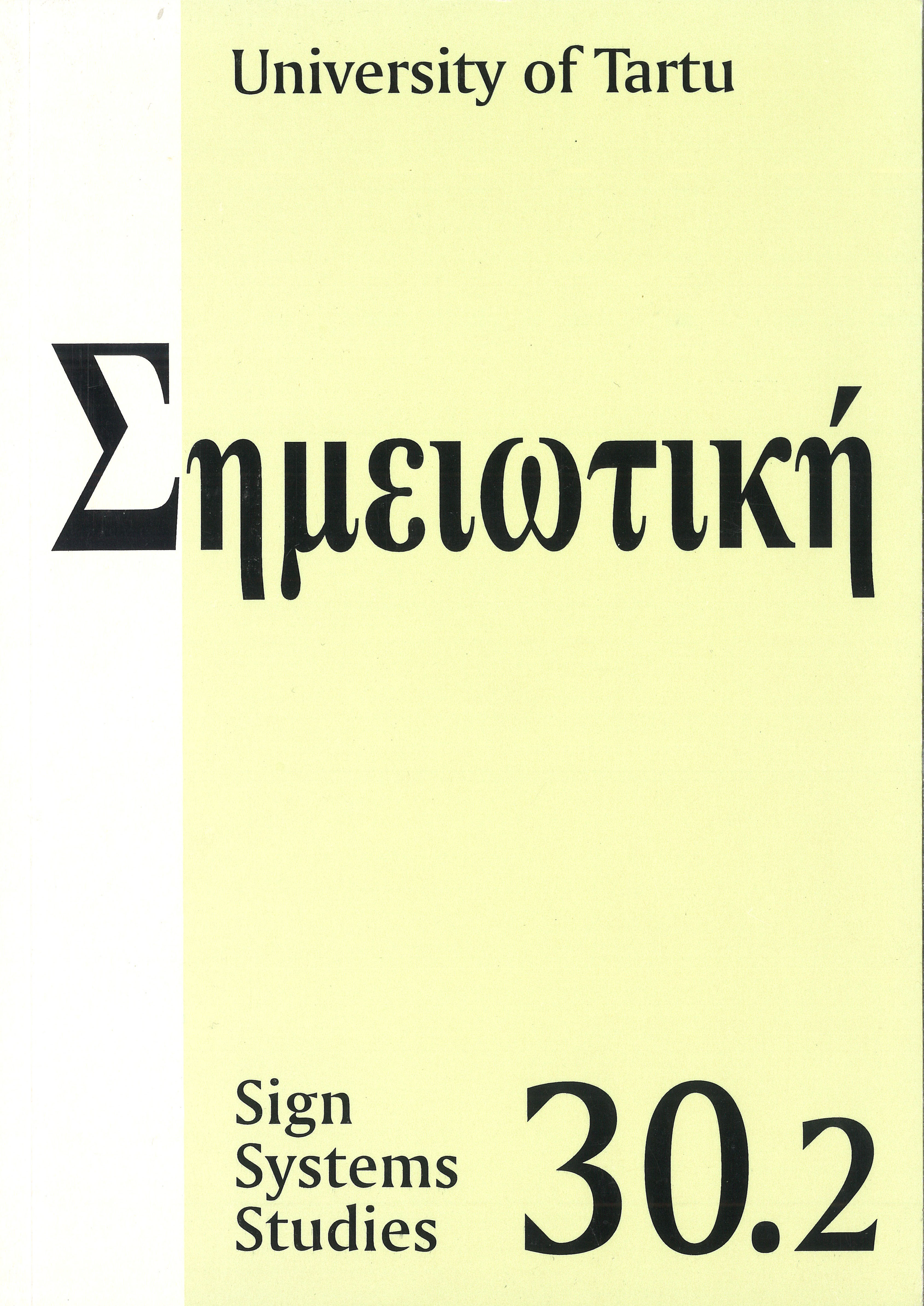The abstract structure of the aesthetic sign
DOI:
https://doi.org/10.12697/SSS.2002.30.2.21Abstract
Walter Benjamin foreshadowed many of the aesthetic theories, currently playing a fundamental role in the production and interpretation of art. By emphasising the role of the expressive character of art, or rather the category of expressivity itself, Benjamin defined art as a language. His aesthetics was characterised by the continuous interaction of two almost reciprocal projects: the theoretical critique of art which is based on an understanding of historical processes, and the understanding of historical processes which is formed by the critical experience of art. We find a fundamental similarity between Benjamin’s dialectical character of the aesthetic sign and Lotman’s double-sidedness of the artwork. In classifying the system of art as a language, both theoreticians space out the structure of art and determine it as the intersection of the synchronic and the diachronic aesthetic discourse. The paper follows the traces of the transition of modern painting from its representational status to an autonomous signification, that is, from being a symbolic expression to a discourse in the grammatological meaning of écriture. Parallel to this transition which resulted into the process of abstraction in painting, there can be observed a shift in the cultural values of art which had its critical bearing upon the world secured not by connections of likeness, but by virtue of the very independence of its values. The abstract form of the modern painting has been the declaration of the language of art as an exemplary realm. What must be expressed and experienced within this realm was (1) the critical reflection on the human condition, and (2) representing the society in so far as art maintained a moral independence from those conditions. This dialectic between the autonomous and social character of art has left deep impacts on the language of painting, a complexity, which has been made transparent through the various semiotic analytic approaches of the aesthetic sign. The paper discusses the processual character of the modern painting and demonstrates briefly the deficiency in the structural analysis of the painting language, encouraging its synthesis with the dynamical character of cultural products as we find it in the Lotmanian culture theory.


